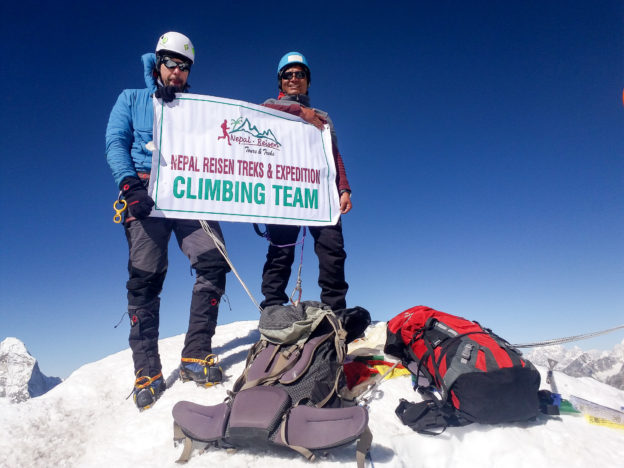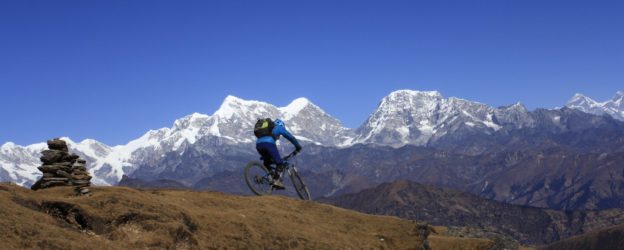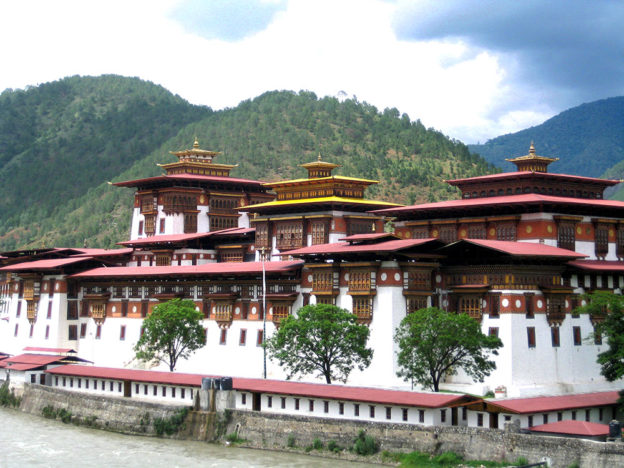Ladahk: Lying in the rain shadow area of the Great Himalayas, Ladakh is a cold desert area and the most sparsely populated land in the whole world with just two people per sq km. It is perhaps the only place where one can get frostbite and sunburn at the same time while sitting in the sun and stretching out one’s legs in the shaded area. The peculiar climatic conditions of the region feature the freezing winds and the burning sun at the same time. The snow-covered expanse of this rugged terrain attracts tourists with its fantastic and panoramic views. This white paradise is surrounded by some of the highest mountain ranges of Great Himalayas and Karakoram ranges that are young and mighty in geological terms. An independent kingdom of the 10th century, Ladakh was continuously pestered by the periodical attacks of the Kashmiri Muslims in the 16th century until it was finally annexed to their state in the mid 19th century. One can see distinct influences of the different visitors to the place in the Ladakhi culture. Culture of Ladakh Ladakhis are known for their cheerful disposition and most of their festivals fall in winters, which serve as an excuse for social and convivial gatherings. In summers, archery competitions and native version of polo are quite common and especially among the Buddhists.People of LadakhThe people of Ladakh bore much resemblance to Tibetans and Central Asians with their round faces, short stubby noses and small ‘chinki’ eyes with pronounced cheekbones. The people of the mountains, they have good stamina are accustomed to manual labor. However, they are considered to be soft and plain at heart.Leh CapitalSituated at an altitude of 3505 m above sea level, Leh is to the east of Jammu & Kashmir and is the capital of Ladakh. Zanskar River flows through it and breathtaking sparking white snowcapped peaks surround the valley of Leh. A blending of barren desert and well-irrigated farms, the ruined Tibetan style palace of Leh is the first to attract the attention of the tourists.
Expert Asian designed this trek because the people who want to trek and climb the mountain to touch the sky. Located on top of the Chhukung glacier between Ama Dablam and Lhotse mountains, Island peak is the most sought after trekking destination because of its challenging geographical condition. Each year more than 300 groups attempt to scale the summit of island peak. This trek offers an excellent opportunity to climb a Himalayan Summit (6173m) together with an exhilarating Trek to the Everest Base Camp and Kala Pathar. The most difficult section is a mixed rock and ice wall at a slope of around 45 degrees leading to the narrow summit ridge.
The Island peak Expedition would be suitable for a climber visiting the Himalayas for the first time or keen hill walkers with previous mountaineering experience using crampons and ice axe. Island Peak is a more technical peak than some of the other trekking peaks in Nepal, it starts with an easy scramble along a rock ridge to a glacier and above there is a steep snow headwall leading to a classic summit ridge. The views from the top are superb including the south face of Lhotse and Ama Dablam.
Island Peak climbing with Everest Base Camp Trek is a fantastic experience in the Himalayas of Nepal. It is designed for energetic and physically fit trekkers with little or no experience in mountain expedition. Island Peak (6,189m/20,305ft) is one of the main climbing peaks in the Everest Region of Nepal with an impressive and highly glaciated West Face that rises from the Lhotse Glacier. Being one of the ‘trekking peaks’ with very little technical aspects, Island Peak is not a difficult undertaking for a beginner climber wishing to enter the incredible world of mountain climbing. Hundreds of climbers flock to Nepal every year to get a permit for Island Peak climbing. Our adventure also takes us into the heartland of the Khumbu Valley and Sherpa culture. Before scaling the peak, we also visit, possibly the most popular trekking destination in the world – Everest Base Camp (5,357m/17,575ft) and Kalapatthar – for the up close views of Mt. Everest and other high mountains.
The Pikey Trek is a comfortable trekking route among the others treks with pikey peak (4,068m) being one of the tallest mountains of Solu. Name of the Pikey is taken from the two names of the Sherpa people. It is well known for its majestic sunrises, Himalayan range, Sherpa culture and their traditions. This trail through wind its way through Jiri, Chaulakharka and Ngaur to reach the Pikey Danda (Hill) area.
The Pikey Trek is renowned for its sunrise and sunset and magnificent views of the Himalayan range of Mt. Everest, Makalu, Kanchanjunga, Gauri Shankar, Lhotse Shar, Numbur, Khatang, Karyalung, Nuptse, Amadablam, Shishapangma, Thamserku and Mera Peak etc. The pikey Trek Base Camp trekking is one of the most popular trekking trails of the Everest region, probably one of the lower elevation view points to see the Mt Everest (8,848m). It is famous for because of having marvelous Himalayan scenery including the mountains range, the Rhododendron flower, Magnolia and wild orchids and the festival season in August that includes a cleansing ritual: thousand of devotees walk to the lake for the festival from village all around Solukhumbu.
This trek is approximately 12-13 days in length and start from Jiri ou 35 min flight straight to Phaplu can be also arranged.The main highlight of this trail is observing local monasteries; the Chewang monastery will be the best opportunity to explore spiritual paths. Also you could be able to observe different culture, languages, life style of the Tamang, Magar and Sherpa’s. Dramatic scenery of mountains, Main walls, Buddhist Stupas , Landscape, Himalayan floras and faunas, an ancient monasteries and splendid high altitude vegetation etc are the main attraction of this trail. While trekking passing through Pikey peak you will be able to experience sunrise views surrounded by mountain peaks like Kanchenjunga, Dhaulagiri and including Everest. Then we will walk down via unique landscape to Junbesi valley. The following day you trek to Thuptenchholing Monastery (Little Tibet) where you can observe traditional Tibetan medicinal therapy. You can also savor local food and drink; enjoy a Sherpa culture, where cultural show will be performed on your request. Then you will continue trek back to Junbesi and return Phaplu from where you can catch a flight for return back to Kathmandu.
Trip info:
Paro beckons you with promises of breathtaking natural sights, cultural richness and good accommodation; you can view Mount Chomolhari from Drugyel dzong, capture Paro’s incredible landscapes from Ta-Dzong and visit indigenous hospital art & craft school, National library, Royal goldsmith workshop and handicraft centers.
Thimpu remains synonymous to its colorful festivals, legendary monasteries and coveted cultural sites. You can stroll around the local markets and see for yourself the everyday lives of Bhutanese people and their craftsmanship.
You can either walk or ride on a horse to Taktsang monastery which epitomizes the religious belief of Bhutanese people.At the end of the journey, you will be left with a feeling that you have truly seen the real Bhutan up close.




